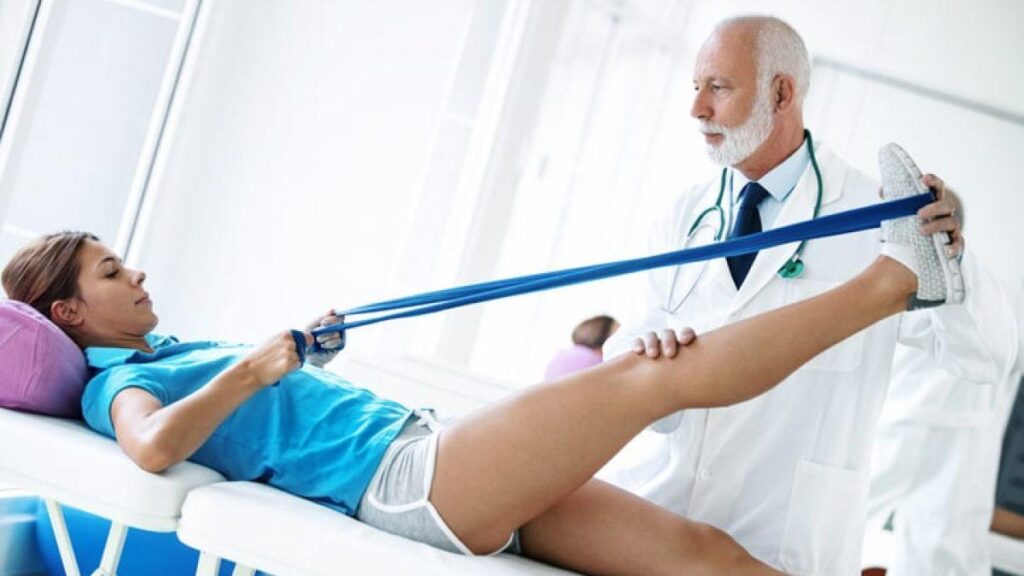Title: Enhancing Athlete Wellness: The Impact of Sports Medicine in NFHS Initiatives
In the dynamic realm of high school sports, prioritizing the health and safety of young athletes has emerged as a vital concern. The National Federation of State High School Associations (NFHS) is leading this charge, focusing on sports medicine programs that aim to safeguard and improve the well-being of student-athletes nationwide. With injuries affecting participation rates and long-term athletic goals, the NFHS is utilizing its extensive resources to advocate for holistic sports medicine practices. These encompass injury prevention, management strategies, and mental health support, thereby setting new benchmarks for care in high school athletics. This article delves into these significant advancements and their influence on athletic engagement at the high school level.
Innovations in Sports Medicine: NFHS Focuses on Student-Athlete Health
As high school sports evolve, the National Federation of State High School Associations (NFHS) champions innovations in sports medicine aimed at protecting student-athletes. The federation stresses implementing comprehensive wellness initiatives that address both physical fitness and mental fortitude. Key components include:
- Concussion protocols: Ensuring thorough evaluation before athletes return to competition.
- Injury risk reduction techniques: Training coaches and players on effective practices to lower injury chances.
- Nutritional guidance: Emphasizing balanced diets and hydration’s role in peak performance.
The NFHS also advocates for incorporating technology into sports medicine practices, enabling real-time monitoring of athlete health metrics. This forward-thinking approach facilitates prompt interventions based on data analysis. Schools are encouraged to implement:
- Wearable technology: To monitor player vitals continuously.
- Teleservices: Offering remote consultations that enhance access to care.
- Kinematic evaluations: Detecting potential issues before they escalate into injuries.
| Main Focus Area | Description of Advancement |
|---|---|
| Avoiding Injuries | The adoption of training programs emphasizing flexibility alongside strength development. |
| Nutritional Support | >Advice from certified nutrition experts specializing in athletics. | >Workshops focused on managing stress levels effectively. |
Injury Prevention & Recovery: Strategies Recommended by NFHS for Athletes
The National Federation of State High School Associations (NFHS) emphasizes several essential strategies within sports medicine aimed at preventing injuries while facilitating recovery processes for athletes. A cornerstone strategy involves conducting thorough pre-participation assessments that evaluate an athlete’s medical history alongside their physical condition—ensuring any existing issues are addressed prior to competition commencement. Furthermore, tailored conditioning regimens specific to each sport can significantly mitigate injury risks by enhancing overall preparedness.Proper technique education is crucial as well; it empowers both athletes and coaches with knowledge about safety protocols.
When injuries do occur, a structured recovery plan is vital—this includes personalized rehabilitation programs utilizing various therapeutic modalities such as ice therapy or electrical stimulation techniques. Implementing a gradual reintegration process back into competitive play helps ensure athletes return safely without risking re-injury while addressing psychological readiness through supportive measures designed specifically for recovery-related anxieties.
This table summarizes key recommendations clearly:
| >Strategy<< / th >> << th >>Description<< / th >> << / tr >> << / head >> << tbody>> << tr > < td >< strong >Pre-participation Assessment< strong >< / td > < td >Evaluate potential health risks prior to competition< / td > << / tr >> << tr >> < td >< strong >Conditioning Regimens< strong >< / td >> < td >Customize training plans according specific sport demands< / td >> << / tr >> << tr >> < td >< strong >Rehabilitation Plans< strong >< / dt >> < dt>Description: Â Â Â Â Â Â Â Â Â Â Â Â Â Â Â Â Â Â Â Â Â Â Â Â Â Â Â Â Â Â Â Â Â Â Â Â Â Â Â Â Â Â Â Â Â Â Â Â Â Â Â Â Â Â Â Â Â
&nbps; &nbps; &nbps; &nbps; The Significance Of Athletic Trainers: Guidelines From NFHS For Supportive Environments In SchoolsAcknowledging their indispensable role within educational institutions cannot be overstated; athletic trainers serve as pivotal figures ensuring student-athlete welfare according guidelines set forth by the National Federation Of State High School Associations(NFHS). These professionals extend beyond immediate responders—they act as advocates promoting appropriate healthcare from prevention through rehabilitation stages across all levels involved with athletics including students themselves! According To established guidelines provided by nfhs , athletic trainers should engage actively across several critical domains such as :
Furthermore , collaboration among coaches/parents/medical personnel proves essential fostering holistic approaches regarding athlete safety . Clear communication coupled teamwork creates environments where participants thrive physically mentally alike . Additionally , Athletic Trainers contribute significantly policy formulation efforts working closely alongside administrative bodies implementing comprehensive measures safeguarding overall wellbeing ! Such initiatives cultivate cultures rooted respect/care throughout entire sporting communities ! Below highlights key functions performed regularly :
“Conclusion”“To summarize”, integrating aspects pertaining directly towards improving athlete wellness under framework established via national federation state high schools associations represents monumental progress made regarding safeguarding youth involved competitive activities today! As enrollment numbers continue rising amongst adolescents participating organized events necessitates robust support systems addressing concerns surrounding injury management/preventative measures becomes increasingly paramount moving forward together collaboratively between nfhs medical professionals educational institutions shaping brighter safer futures ahead!” |
|---|





